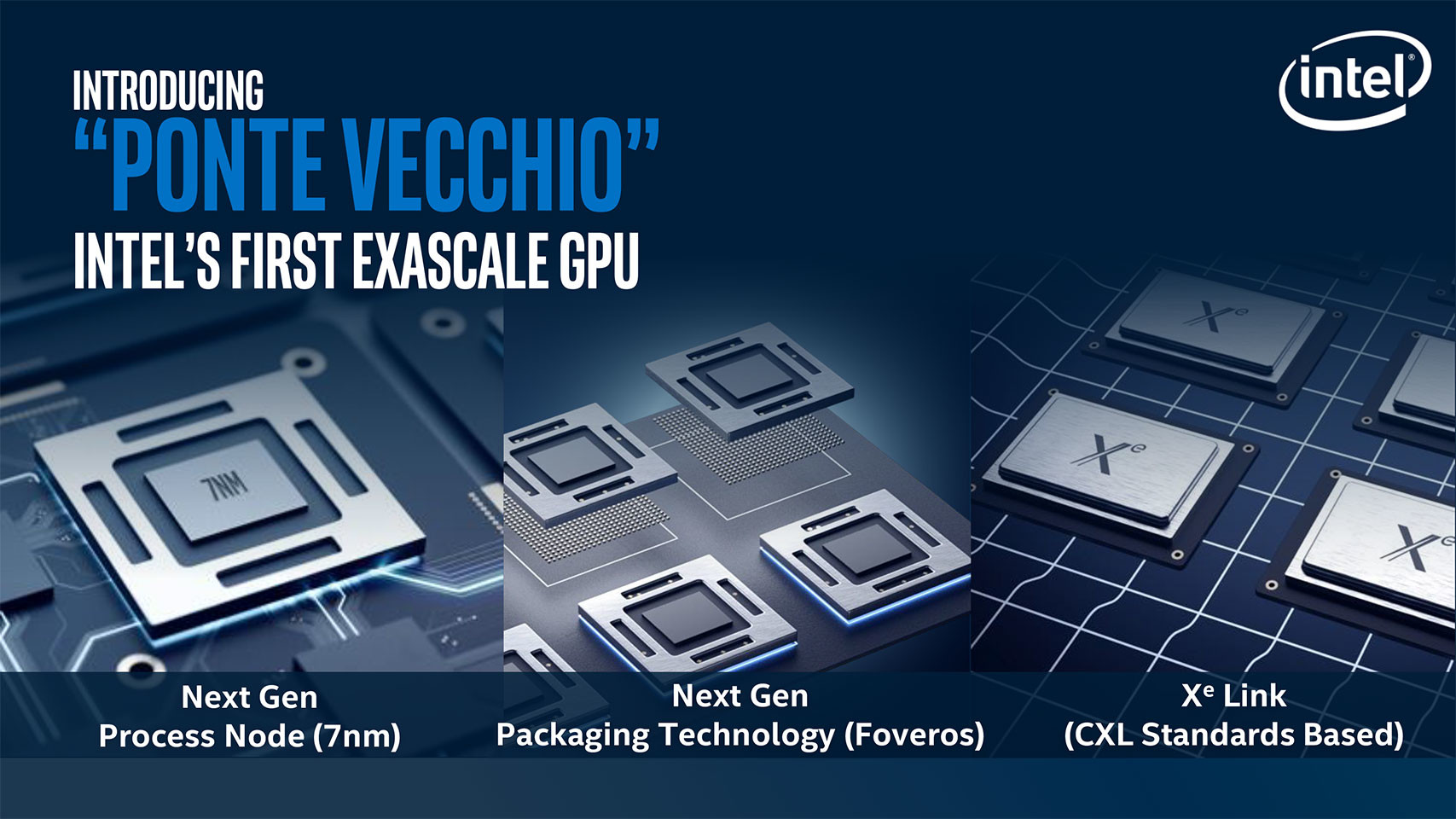Ponte Vecchio looks like a complete powerhouse.
As per a VideoCardz report citing Intel this week, Intel has reportedly baptized its future 7nm Xe graphics card after Ponte Vecchio, a stone bridge that overlooks the Arno River in Florence, Italy. Ponte Vecchio won’t be a gaming graphics card upon release, but will instead target exascale computing.
Intel seemingly picked the Ponte Vecchio codename to symbolize the high-speed Compute Express Link (CXL) interconnection, which Ponte Vecchio graphics cards will use to communicate with each other. Ponte Vecchio is expected to make use of Intel’s 3D Foveros technology for 3D packaging. According to a “press deck” that VideoCardz noted it had not seen, Intel will equip Ponte Vecchio with high bandwidth memory (HBM), and it’ll also have ultra-high cache and high double-precision FP throughput.
Apparently, Intel has big plans for Ponte Vecchio. The chipmaker is rumoredly planning to eventually deploy Ponte Vecchio in different markets: “HPC/Exascale, DL/Training, Cloud GFX, Media Transcore Analytics, Workstation, Gaming, PC Mobile and Ultra Mobile,” VideoCardz said.
Intel is first expected to incorporate Ponte Vecchio into Project Aurora, a next-generation exascale supercomputer for the U.S. Department of Energy (DOE). Project Aurora is seemingly equipped with two Intel Xeon Sapphire Rapids processors and six Intel Xe Ponte Vecchio graphics cards. The supercomputer may also feature One API, Intel’s project for a unified programming model to facilitate software development across different computing architectures.
VideoCardz believes Intel will share more details on Project Aurora on November 17. Hopefully, the chipmaker delights us with some juicy information on Ponte Vecchio as well.
